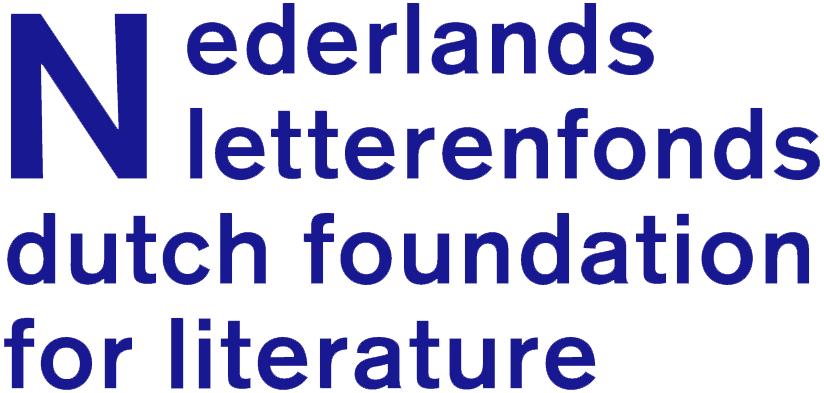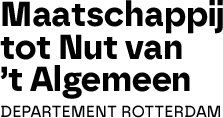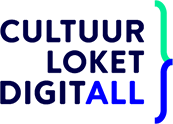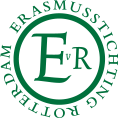Guest curator: Prudence Peiffer
The magician’s dove - a poetic bestiary
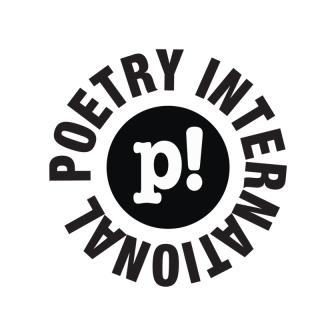
March 31, 2016
Even when an animal might share with us some innate way of perceiving the world, this only underscores the sensory depths of our singular experience. In an article in the Harvard Review about Elizabeth Bishop’s marginalia, I was delighted to discover that one of her annotations in the margin of a W.H. Auden poem concerned an animal fact along these lines of connectedness, action. “Many creatures make nice noise / But none, it seems / are moved by music,” Auden’s little poem goes. And Bishop has penciled in “No – seals are –,” a point she develops in the incredible “At the Fishhouses,” whose narrator encounters a seal interested in music, “so I used to sing him Baptist hymns.”
Is a poem in us all along, or does it arrive, barking, at the door? Idra Novey’s ominous-sounding “The Visitor” drops us mid-action into the habits of its mysterious subject: “Does no dishes, dribbles sauce / across the floor.” The next lines make a gryphon of monster and pet, “Is more dragon / than spaniel, more flammable / than fluid,” that feels like creatures from a child’s imagination. And while I read references to an infant – “all wet mattress to my analysis” and “is calling now . . . tiny B who brings the joy” – I also read a beautiful description of the act of creativity (“is calling now / as I write this”). And ultimately of the poem itself: its uselessness, its feral domesticity, the mess that makes us dance and bloom.
Yusef Komunyakaa’s “Envy” might be read as the internal fight with the ego while writing. The process can be ugly, perverse; the worst days are puddles of insecurity, jealousy, and unsaved drafts, and the best can feel like dark luck (the guano again). Komunyakaa’s Icarus is connected to the confusing burn of reading another’s very good verse (starting, perhaps, as far back as Ovid’s Metamorphosis). Great writing is uplifting and devastating – because you did not write it and cannot measure up, no matter how many feathers you glue on. What must it feel like to be the golden plover, the natural? “In his eyes, he outflew the bird’s / Equilibrium, wondering how this / Small creature of doubt braved / The briny trade winds.” And what to do with our ambition, “driven by dash & breathless style”? Lucía Estrada’s “El vuelo de las grullas” (The flight of the crane) connects enigmatic grace with spiritual zeal (“I was born / not to lose / a movement in its writing”), as if an instant of watching a bird cross an ashen sky could “open the flame” of creativity, could be the action that is itself poetry.
A different sort of flight is present in Jo Bell’s “Rooks over Avebury”, which occupies that dual plane only a poem can: at once a description of a simple scene from nature – the arrangement of crows high over a Neolithic stone circle in England – and a description of describing that scene. Both planes contain the courage of movement, even when you don’t know what or where it is you are getting at, which is clinched in the repetition of the last line: “They flew, it seemed, without direction. But they flew.” And the interrupting clause “it seemed” allows that they might in fact know exactly what they are doing: a careful building of structure and pattern in the winging and the writing. Throughout this concise poem, there’s a connection between bird and stone. Just as we don’t know the rooks’ direction, we don’t know why or how Avebury was created. And likewise, the wonderful doubling of mysterious ritual behavior through historic time: these arrangements on the ground and in the sky. There’s – indulge me – one more interesting animal side note: rooks are among the few birds that will use simple tools for problem solving. One of these tools is, like Neolithic man, the stone. In trials, rooks knew to add stones with their beak to an almost empty glass of water in order to raise its level to drink – an Aesop fable come to life.
From stone and bird to enamel and fish: Kay Ryan’s incredible “Sharks’ Teeth” is a parable of poetry, too. In a poem of just over 50 words, itself “compact and dangerous as a shark,” the animal’s tooth is an efficient machine that snags so many images: silence “angled” inside noise, the jagged skyline of a city, a triangle of quiet in an hour of that bustling metropolis (along with the clever internal rhyming of “in it” and “minute” that performs that pause) and a physical fossil of time. As it turns out, the shark tooth is among the most common fossils on earth: sharks continually shed their teeth, losing thousands in a lifetime. Pliny the Elder believed that they rained from the sky during lunar eclipses. In the Renaissance, they were thought to come from dragons; these “tongue stones” were used as talismans against evil and, through the eighteenth century, were dipped in drinks as an antidote to poison. In other words, a shark’s tooth has been magic, a poem, all along. Luckily we have Ryan to read it to us.
Prudence Peiffer is an art historian and writer specializing in modern and contemporary art, with a particular focus on abstraction and artists’ texts. She received her doctorate from Harvard University, and is currently a senior editor at Artforum magazine. Past poetry honors include the Amy Award (Poets & Writers) and the Frederick M. Clapp poetry fellowship from Yale University; her poems have been published in journals including Many Mountains Moving, Poets & Artists and Prelude. With fellow writer Oana Sanziana Marian she ran the reading series The Folding Chair in Brooklyn from 2011-2013; a book on the photography of Ad Reinhardt is forthcoming. Twitter: @prudencepeiffer
At my best friend’s seventh birthday party, the magician’s dove, which just minutes before had been a napkin, flew high above us and shat on her. How extraordinary! a parent said. The dove knew who the birthday girl was. Many years later, I was sitting in the harbor of a remote Croatian fishing village enjoying the magic hour when I felt a sudden warmness at the top of my head that, as it slowly slid down my cheek, I realized couldn’t be the last of the sun. It’s good luck! my boyfriend said, laughing. Because how else to account for such absurd, messy accidents, in which you feel both chosen and embarrassed?
Telling someone you are a poet elicits about the same reaction as telling someone you are a magician, and maybe the two vocations aren’t so different. To make something out of nothing, or something alive and flapping out of something ordinary and inanimate – we write for that. We read for that. But the uncontrollable magic up our sleeve also contains a literal realness – that guano – making a poem connected to what is happening on the ground. This is a careful balance, because every poem is held up and together by its status as a poem. It is, by nature, self-referential, in its own sphere. But certain poems bring us closer to a narrative of coming into existence, and these are usually the ones I love most.
I didn’t set out to pick poems that contain animals. But when I assembled this small group of favorites from Poetry International, there they were, some more central than others –cranes, dogs, dragons, plovers, rooks and sharks – my accidental bestiary of the creative process. Wild, imperfect and mysterious in their commitments, animals often embody this writing-into-being. There’s a wonderful, long high/low tradition of animals in poems; I’m interested in the ways in which they are introduced to get at what’s human – how they are used to talk about the weirdness and wonder of a poem’s very existence, and by extension, our unique ability among animals to see or sense one thing as many.Even when an animal might share with us some innate way of perceiving the world, this only underscores the sensory depths of our singular experience. In an article in the Harvard Review about Elizabeth Bishop’s marginalia, I was delighted to discover that one of her annotations in the margin of a W.H. Auden poem concerned an animal fact along these lines of connectedness, action. “Many creatures make nice noise / But none, it seems / are moved by music,” Auden’s little poem goes. And Bishop has penciled in “No – seals are –,” a point she develops in the incredible “At the Fishhouses,” whose narrator encounters a seal interested in music, “so I used to sing him Baptist hymns.”
Is a poem in us all along, or does it arrive, barking, at the door? Idra Novey’s ominous-sounding “The Visitor” drops us mid-action into the habits of its mysterious subject: “Does no dishes, dribbles sauce / across the floor.” The next lines make a gryphon of monster and pet, “Is more dragon / than spaniel, more flammable / than fluid,” that feels like creatures from a child’s imagination. And while I read references to an infant – “all wet mattress to my analysis” and “is calling now . . . tiny B who brings the joy” – I also read a beautiful description of the act of creativity (“is calling now / as I write this”). And ultimately of the poem itself: its uselessness, its feral domesticity, the mess that makes us dance and bloom.
Yusef Komunyakaa’s “Envy” might be read as the internal fight with the ego while writing. The process can be ugly, perverse; the worst days are puddles of insecurity, jealousy, and unsaved drafts, and the best can feel like dark luck (the guano again). Komunyakaa’s Icarus is connected to the confusing burn of reading another’s very good verse (starting, perhaps, as far back as Ovid’s Metamorphosis). Great writing is uplifting and devastating – because you did not write it and cannot measure up, no matter how many feathers you glue on. What must it feel like to be the golden plover, the natural? “In his eyes, he outflew the bird’s / Equilibrium, wondering how this / Small creature of doubt braved / The briny trade winds.” And what to do with our ambition, “driven by dash & breathless style”? Lucía Estrada’s “El vuelo de las grullas” (The flight of the crane) connects enigmatic grace with spiritual zeal (“I was born / not to lose / a movement in its writing”), as if an instant of watching a bird cross an ashen sky could “open the flame” of creativity, could be the action that is itself poetry.
A different sort of flight is present in Jo Bell’s “Rooks over Avebury”, which occupies that dual plane only a poem can: at once a description of a simple scene from nature – the arrangement of crows high over a Neolithic stone circle in England – and a description of describing that scene. Both planes contain the courage of movement, even when you don’t know what or where it is you are getting at, which is clinched in the repetition of the last line: “They flew, it seemed, without direction. But they flew.” And the interrupting clause “it seemed” allows that they might in fact know exactly what they are doing: a careful building of structure and pattern in the winging and the writing. Throughout this concise poem, there’s a connection between bird and stone. Just as we don’t know the rooks’ direction, we don’t know why or how Avebury was created. And likewise, the wonderful doubling of mysterious ritual behavior through historic time: these arrangements on the ground and in the sky. There’s – indulge me – one more interesting animal side note: rooks are among the few birds that will use simple tools for problem solving. One of these tools is, like Neolithic man, the stone. In trials, rooks knew to add stones with their beak to an almost empty glass of water in order to raise its level to drink – an Aesop fable come to life.
From stone and bird to enamel and fish: Kay Ryan’s incredible “Sharks’ Teeth” is a parable of poetry, too. In a poem of just over 50 words, itself “compact and dangerous as a shark,” the animal’s tooth is an efficient machine that snags so many images: silence “angled” inside noise, the jagged skyline of a city, a triangle of quiet in an hour of that bustling metropolis (along with the clever internal rhyming of “in it” and “minute” that performs that pause) and a physical fossil of time. As it turns out, the shark tooth is among the most common fossils on earth: sharks continually shed their teeth, losing thousands in a lifetime. Pliny the Elder believed that they rained from the sky during lunar eclipses. In the Renaissance, they were thought to come from dragons; these “tongue stones” were used as talismans against evil and, through the eighteenth century, were dipped in drinks as an antidote to poison. In other words, a shark’s tooth has been magic, a poem, all along. Luckily we have Ryan to read it to us.
Prudence Peiffer is an art historian and writer specializing in modern and contemporary art, with a particular focus on abstraction and artists’ texts. She received her doctorate from Harvard University, and is currently a senior editor at Artforum magazine. Past poetry honors include the Amy Award (Poets & Writers) and the Frederick M. Clapp poetry fellowship from Yale University; her poems have been published in journals including Many Mountains Moving, Poets & Artists and Prelude. With fellow writer Oana Sanziana Marian she ran the reading series The Folding Chair in Brooklyn from 2011-2013; a book on the photography of Ad Reinhardt is forthcoming. Twitter: @prudencepeiffer
© Prudence Peiffer
Sponsors

